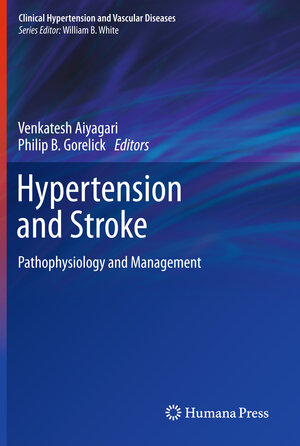
From the reviews:
“This book is interesting and well written by authorities in their fields. References are of sufficient number, and the tables and figures are appropriate. … this book could find a place in the libraries of neurologists, intensivists, hypertension experts, primary care physicians, or public health specialists. The vast array of medical professionals involved in the diagnosis and treatment of hypertension and stroke is testimony to the broad appeal this book can have.” (Panayiotis N. Varelas, Journal of the American Medical Association, November, 2011)
“This book is one of a series on Clinical Hypertension and Vascular Disease edited by William B. White, an eminent authority on hypertension. … useful to academics planning to write papers on the topics covered, as a source of references.” (Canadian Journal of Neurological Sciences, September, 2011)
“The pathophysiology, epidemiology, diagnosis, and treatment of hypertension with respect to cerebrovascular disease, this book also reviews the management of hypertension in multiple settings such as in primary and secondary stroke prevention, acute ischemic and hemorrhagic stroke, and vascular cognitive impairment/dementia. … a broad audience that includes primary care physicians, neurologists, cardiologists, physician assistants, nurse practitioners, residents, medical students, epidemiologists, stroke and cardiovascular researchers, and public health specialists. … This book offers a fresh perspective on the relationship between these two common entities.” (Dan Capampangan, Doody's Book Reviews, March, 2011)
Hypertension and Stroke
Pathophysiology and Management
herausgegeben von Venkatesh Aiyagari und Philip B. GorelickComprehensive chapters present the evidence supporting strategies for stroke prevention and care, including blood pressure lowering therapies, anti-coagulation, and management of other cerebrovascular risk factors. In addition to prescriptive measures for first stroke prevention, the book illuminates current regimens for care immediately after acute stroke and for the prevention of recurrent stroke. A unique section is dedicated to the exploration of the interaction between elevated blood pressure and brain function and cognition. The concluding chapter provides a resource towards optimizing the organization of stroke care.
Hypertension and Stroke is of great utility for specialists in neurology and cardiovascular medicine and a valuable practical resource for all physicians caring for older adults and hypertensive patients.



